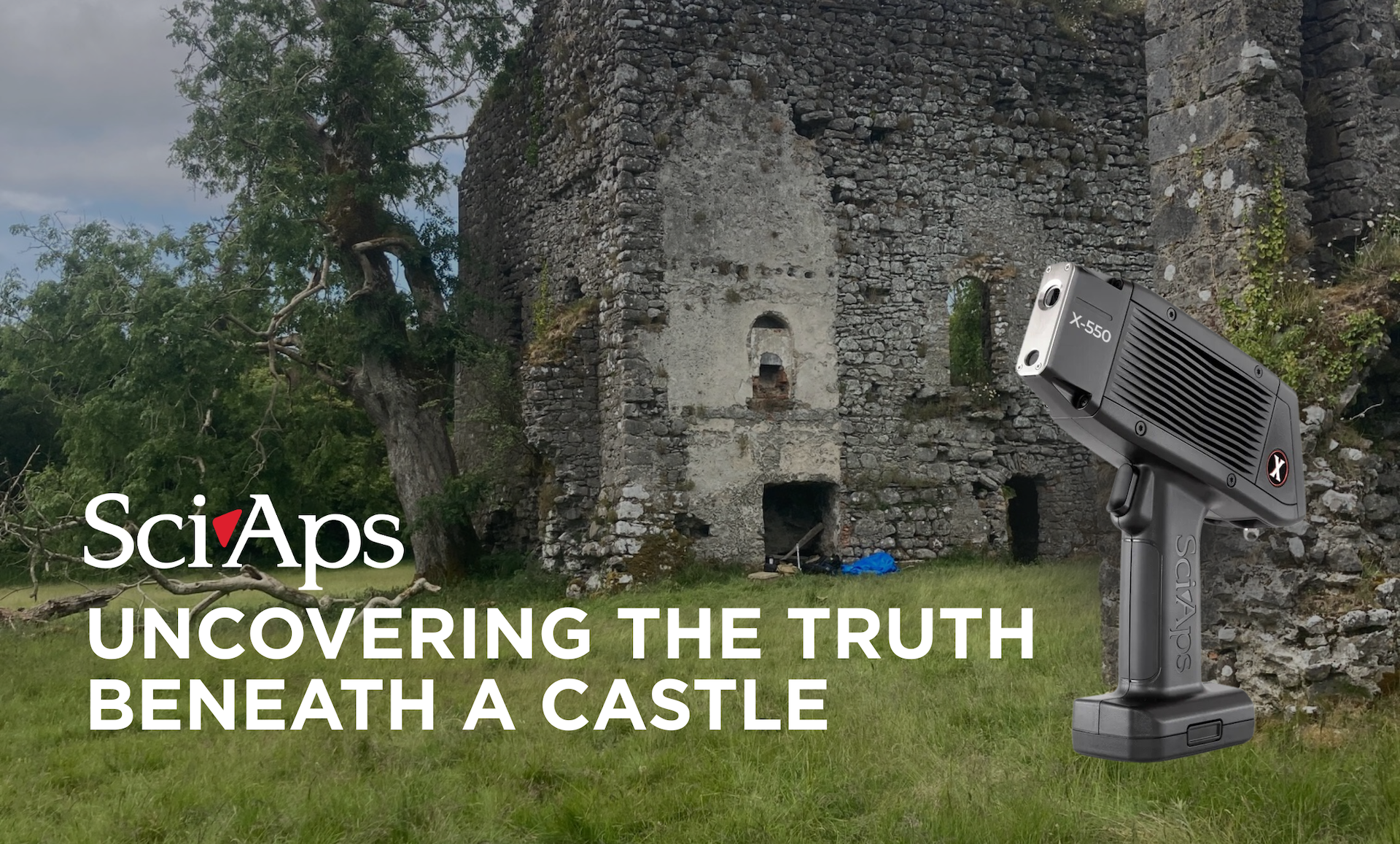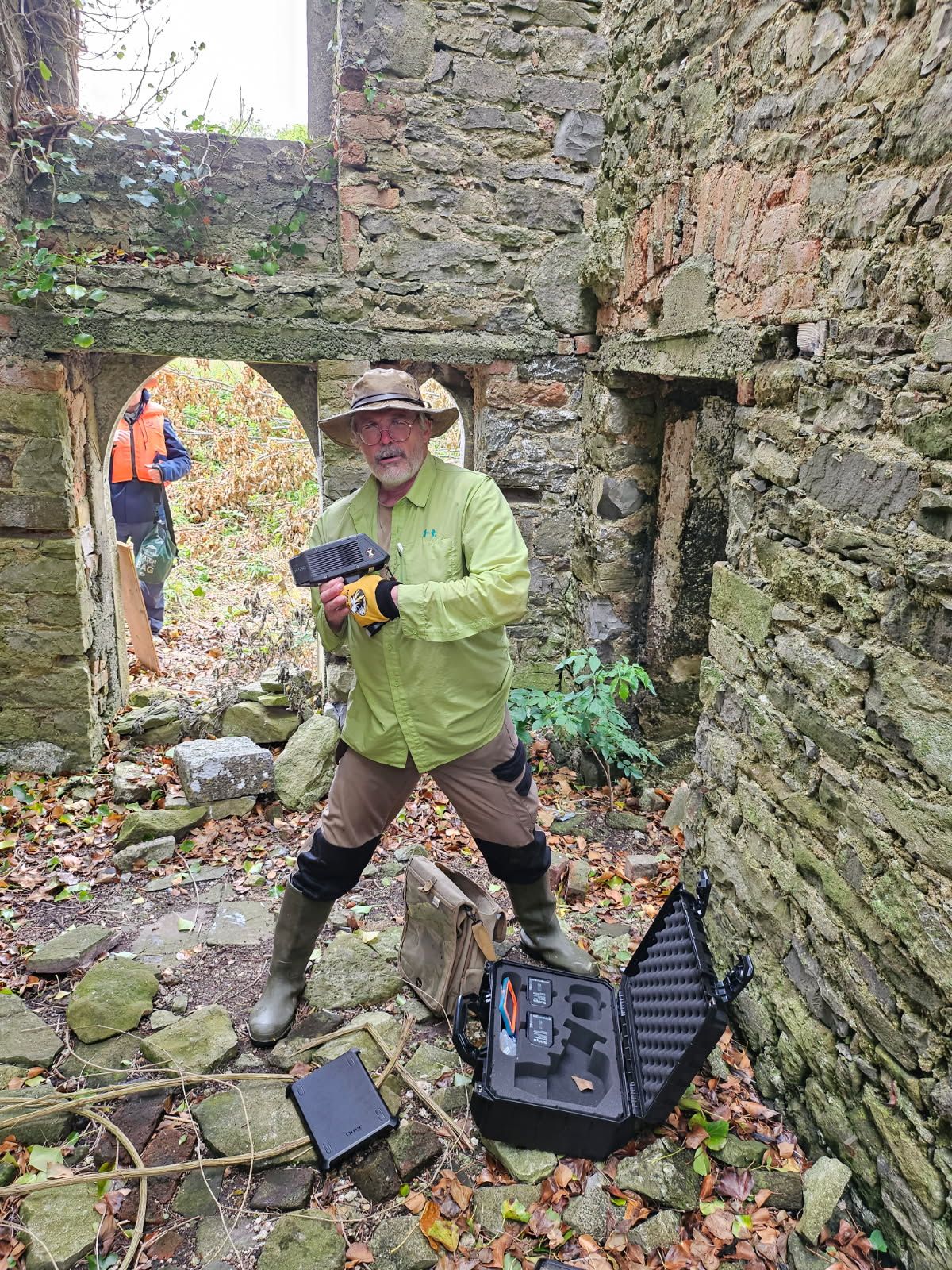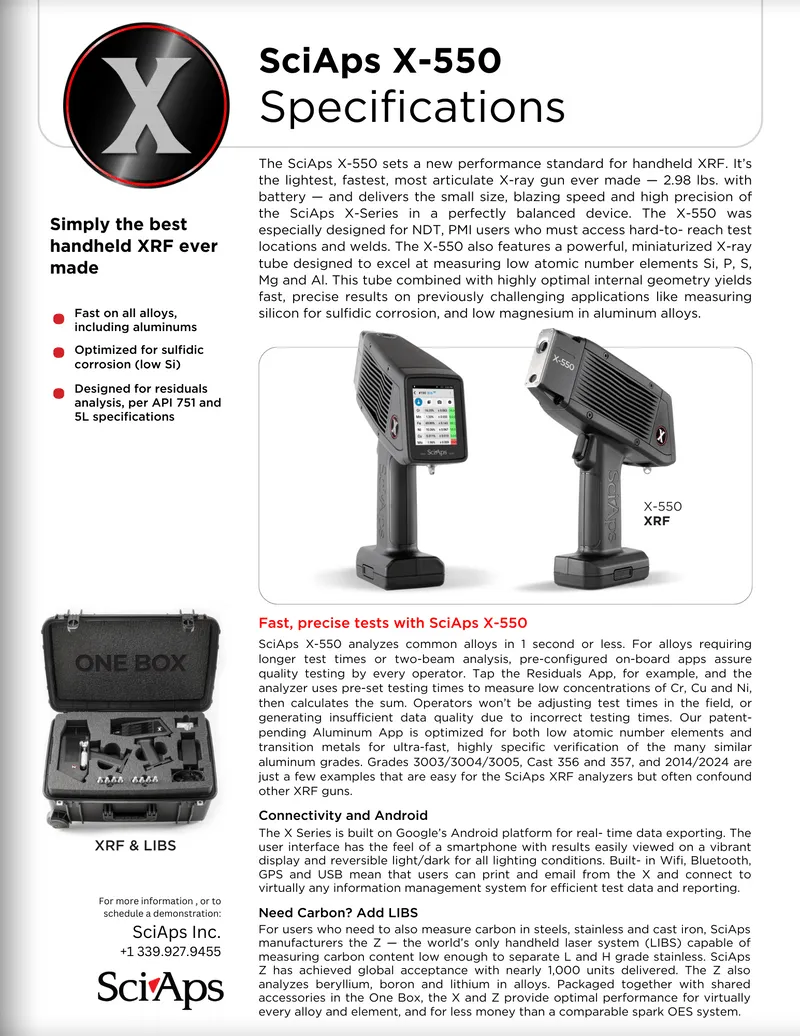August 20, 2025
Products
Services
Industries
About
Resources

What happens when a historian, a crumbling medieval castle, and a cutting-edge SciAps XRF analyzer meet on a misty Irish island? You get groundbreaking discoveries, digital archaeology in action, and a transformative vision for historical research.

Dr.Tom Finan, a professor of history and archaeology at Saint Louis University, has spent years peeling back the layers—literally—of The Rock in Lough Key, a castle long dismissed as a 19th-century "folly." Thanks to SciAps’X-550 XRF analyzer, Finan and his team have proven that beneath that romantic façade lies a true medieval fortress built by the powerful MacDermot dynasty—one of the most prominent Gaelic families in medieval Ireland.
As it turns out, mortar tells time—and Finan’s XRF work is revolutionizing how historians date architecture.
“You can’t just slap new mortar on old stone and assume it’ll stick,” Finan notes. “Knowing which sections use modern Portland cement versus medieval lime mortar is vital for conservation.”
Thanks to a grant from the Irish government, the castle walls will soon be stabilized and preserved. Finan’s team is using chemical signatures from the X-550 to map out these mortar zones. Some results were surprising: the mortar in one tower seems to be 200 years older than previously thought.
Finan’s team scanned over 200 nails, identifying chemical differences between medieval ironwork and modern steel, including those mistakenly assumed to be old. This kind of real-time chemical sorting is only possible with a portable tool like the X-550.
They also found dress pins made of bronze and silver, created right on the island using crucibles still coated in metal residues. The SciAps analyzer detected elemental fingerprints of bronze and trace lead movement—evidence of on-site craftsmanship by medieval metallurgists.
Some of the pottery fragments looked like French imports, specifically from the Saintonge region, based on their green glaze. But were they copies or the real thing?
The answer came from the fabric—the core ceramic material—analyzed with the X-550. Finan discovered that both types were present: real French pottery and Irish-made imitations, revealing cross-cultural influence and high-status trading networks.
“This tool changed the way we do fieldwork,” Finan says. “Every time we scanned something, we came up with new questions—and answers.”
Using the X-550, Finan ran rapid scans on-site, then paired the output with AI tools to cluster datasets and compare compositions. The analyzer's non-destructive nature also made it perfect for fragile artifacts. “We took four readings per mortar joint to build a reliable baseline,” he explains.
This wasn’t just a solo academic experiment—Finan’s students got real-world, high-impact experience.
“One of my undergrads who worked with me and trained on the SciAps analyzer now works for the Missouri DOT. When she mentioned her various experiences, they hired her on the spot—and upgraded her to a paid intern.”
SciAps enabled hands-on research with real tools in a way textbooks never could. From geophysics and drone surveying to artifact chemistry, students engaged in truly interdisciplinary archaeology.
“The SciAps interface is fantastic. The data export is seamless. It’s just Excel—no proprietary headaches.”
Finan had used other analyzers before but found the X-550’s intuitive UI, portability, and speed unbeatable. When he joined SciAps’ AcademicLoaner Program, the unit arrived just four days later.
“I read the manual on the plane and was zapping artifacts the next day.”
He and his colleagues are now pushing for his university to purchase one permanently—a no-brainer, given their new R1 research status.
Dr. Finan’s work at Lough Key demonstrates the extraordinary versatility and scientific rigor of the SciAps X-550 XRF analyzer. From dating architectural elements and tracing trade routes to confirming metalwork techniques, the analyzer empowers researchers to answer complex questions quickly and accurately—right in the field.
Whether you’re an archaeologist, material scientist, or academic researcher, SciAps handheld analyzers offer the precision, portability, and power to uncover the past, inform the present, and shape the future.
The X-550 isn’t just for medieval castles. Finan notes that Earth Science colleagues are using it for lead detection in Missouri waterways, and the X-550 Enviro/HUD version offers even broader elemental capability.
There’s also growing excitement around SciAps' handheld infrared technology, which can be used for mineral detection, agriculture, and recycling of plastics and contaminant removal.

“You’re only limited by your time,” says Finan. “It’s not whether the analysis will work—it’s how far you can go with it.”
The long-term goal? Conservation and tourism. With €35,000 in initial funding (and potentially half a million to follow), the team plans to stabilize the site, install placards, and eventually open the island to the public. The research continues, layer by layer, and SciAps XRF is helping them build a chemical and historical chronology that would have been unthinkable just a decade ago.
This is more than a single project. It’s a proof of concept for researchers everywhere. With SciAps, you can:
Contact us to join our Academic Loaner Program or explore our analyzers at www.sciaps.com
“It’s a home run kind of thing. I had crazy ideas, and the X-550 made them possible.”

And now, as a powerful combination with Malvern Panalytical and Micromeritics, our customers have access to a huge range of unparalleled technology for use in the field or in the lab. Read about our portable FieldSpec solution used at an archaeological site in Pompeii, or how the Zetium was used to map the elemental distribution in ancient coins.
Upgrade your materials analysis today - visit our website to view the full product range.